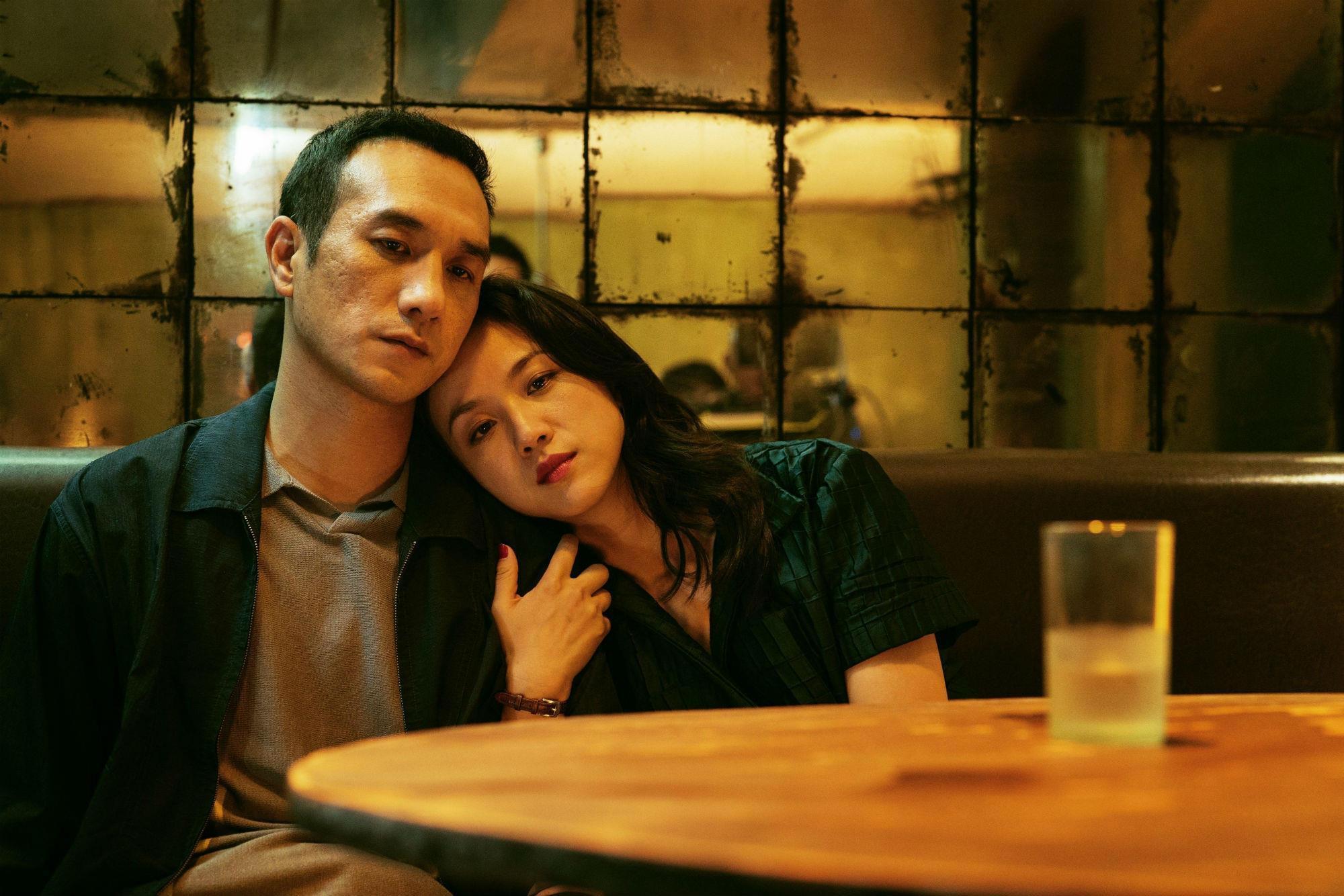Long Day's Journey into Night review - Chinese art-house stunner | reviews, news & interviews
Long Day's Journey into Night review - Chinese art-house stunner
Long Day's Journey into Night review - Chinese art-house stunner
Director Bi Gan's hallucinatory sophomore drama is a thing of beauty and daring

Marketed as a couples-friendly romance, Bi Gan’s Long Day’s Journey into Night made a massive $37 million on its opening day in China but was subsequently denounced by irate viewers who felt they’d been conned into watching a neo-noir pastiche that bafflingly morphs into a journey into the hero’s unconscious mind.
Bi’s follow-up to his impressive 2016 debut Kaili Blues, which featured a 40-minute single shot, sends Luo Hongwu (Huang Jue), a drifting former casino manager, to his hometown Kaili in the south-eastern Guizou province for his father’s funeral after an absence of 12 years. Before his widowed stepmother, consigned to an out-of-focus shot, hustles him from the family restaurant she’s just inherited, Hongwu finds a faded photo of a woman, replete with bullet hole, in the back of the old clock at which his ailing father used to gaze.
Hongwu subsequently searches for Wan Qiwen (Tang Wei, pictured below with Huang Jue), the sullen femme fatale who deserted his childhood friend Wildcat for the mobster Zuo Hongyuan (Chen Yongzhong), who murdered him for an unpaid debt. Hongwu soon finds Qiwen on a train, lights her cigarette while yanking her hair, and, offscreen, pumps her for information at the restaurant. Afterwards he stalks her – a vision in emerald – along a tunnel in his van and, since she reminds him of his mother (possibly the woman in the photo), they inevitably become lovers, which fits the movie’s Oedipal scheme. They tryst in the waterlogged concrete box where Hongwu sleeps; Tsai Ming-liang’s leaky The Hole (1998) comes to mind.
 Visiting a cinema, Hongwu falls asleep and dreams he’s playing ping-pong with the insolent adolescent Wildcat in the mineshaft where the latter's body was later found. The scene is part of the mesmerizing 55-minute 3D single shot that depicts Hongwu descending on a zip line, terrace-by-terrace, into the Kaili of his past and toward a pivotal encounter with the truculent poolhall proprietress Kaizhen (Tang again), another of Zuo’s women (or the younger Qiwen?). Since Tang and another actress, the Taiwanese veteran Sylvia Chang, have dual roles, the accent is on oneiric over-determination, not intelligibility. Hongwu, who at one point imagines being tortured by the Bowie-ish Zuo, clearly regards himself in a sexual rivalry with the gangster.
Visiting a cinema, Hongwu falls asleep and dreams he’s playing ping-pong with the insolent adolescent Wildcat in the mineshaft where the latter's body was later found. The scene is part of the mesmerizing 55-minute 3D single shot that depicts Hongwu descending on a zip line, terrace-by-terrace, into the Kaili of his past and toward a pivotal encounter with the truculent poolhall proprietress Kaizhen (Tang again), another of Zuo’s women (or the younger Qiwen?). Since Tang and another actress, the Taiwanese veteran Sylvia Chang, have dual roles, the accent is on oneiric over-determination, not intelligibility. Hongwu, who at one point imagines being tortured by the Bowie-ish Zuo, clearly regards himself in a sexual rivalry with the gangster.
Like the Portuguese post-colonial nocturne The Last Time I Saw Macao (2012), directed by João Pedro Rodrigues and João Rui Guerra da Mata, Long Day’s Journey into Night (which is unrelated to Eugene O’Neill’s play) poeticizes a place haunted by the memory of the lost love that defined the future. Bi’s cinematographers Yao Hung-I and Dong Jinsong (Frenchman David Chizallet shot the 3D sequence) frequently wander away from Hongwu to ruminate on the city’s liminal spaces and detritus – old railway tracks, a pile of rusting iron, and other Tarkovskian memory-conveyors.
If you enjoy the beauty in decay, the inherent romanticism of looking for someone beyond reach, and the dazzling movement of a psychologically motivated camera, then Long Day’s Journey into Night might be the movie you’ve been waiting for. Though done with a little too much bravura to be considered a masterpiece, it suggests Bi will become one of the great directors of the coming decade.
rating
Explore topics
Share this article
The future of Arts Journalism
You can stop theartsdesk.com closing!
We urgently need financing to survive. Our fundraising drive has thus far raised £49,000 but we need to reach £100,000 or we will be forced to close. Please contribute here: https://gofund.me/c3f6033d
And if you can forward this information to anyone who might assist, we’d be grateful.

Subscribe to theartsdesk.com
Thank you for continuing to read our work on theartsdesk.com. For unlimited access to every article in its entirety, including our archive of more than 15,000 pieces, we're asking for £5 per month or £40 per year. We feel it's a very good deal, and hope you do too.
To take a subscription now simply click here.
And if you're looking for that extra gift for a friend or family member, why not treat them to a theartsdesk.com gift subscription?
more Film
 Can I get a Witness? review - time to die before you get old
Ann Marie Fleming directs Sandra Oh in dystopian fantasy that fails to ignite
Can I get a Witness? review - time to die before you get old
Ann Marie Fleming directs Sandra Oh in dystopian fantasy that fails to ignite
 Happyend review - the kids are never alright
In this futuristic blackboard jungle everything is a bit too manicured
Happyend review - the kids are never alright
In this futuristic blackboard jungle everything is a bit too manicured
 Robert Redford (1936-2025)
The star was more admired within the screen trade than by the critics
Robert Redford (1936-2025)
The star was more admired within the screen trade than by the critics
 Blu-ray: The Sons of Great Bear
DEFA's first 'Red Western': a revisionist take on colonial expansion
Blu-ray: The Sons of Great Bear
DEFA's first 'Red Western': a revisionist take on colonial expansion
 Spinal Tap II: The End Continues review - comedy rock band fails to revive past glories
Belated satirical sequel runs out of gas
Spinal Tap II: The End Continues review - comedy rock band fails to revive past glories
Belated satirical sequel runs out of gas
 Downton Abbey: The Grand Finale review - an attemptedly elegiac final chapter haunted by its past
Noel Coward is a welcome visitor to the insular world of the hit series
Downton Abbey: The Grand Finale review - an attemptedly elegiac final chapter haunted by its past
Noel Coward is a welcome visitor to the insular world of the hit series
 Islands review - sunshine noir serves an ace
Sam Riley is the holiday resort tennis pro in over his head
Islands review - sunshine noir serves an ace
Sam Riley is the holiday resort tennis pro in over his head
 theartsdesk Q&A: actor Sam Riley on playing a washed-up loner in the thriller 'Islands'
The actor discusses his love of self-destructive characters and the problem with fame
theartsdesk Q&A: actor Sam Riley on playing a washed-up loner in the thriller 'Islands'
The actor discusses his love of self-destructive characters and the problem with fame
 Honey Don’t! review - film noir in the bright sun
A Coen brother with a blood-simple gumshoe caper
Honey Don’t! review - film noir in the bright sun
A Coen brother with a blood-simple gumshoe caper
 The Courageous review - Ophélia Kolb excels as a single mother on the edge
Jasmin Gordon's directorial debut features strong performances but leaves too much unexplained
The Courageous review - Ophélia Kolb excels as a single mother on the edge
Jasmin Gordon's directorial debut features strong performances but leaves too much unexplained
 Blu-ray: The Graduate
Post #MeToo, can Mike Nichols' second feature still lay claim to Classic Film status?
Blu-ray: The Graduate
Post #MeToo, can Mike Nichols' second feature still lay claim to Classic Film status?

Add comment